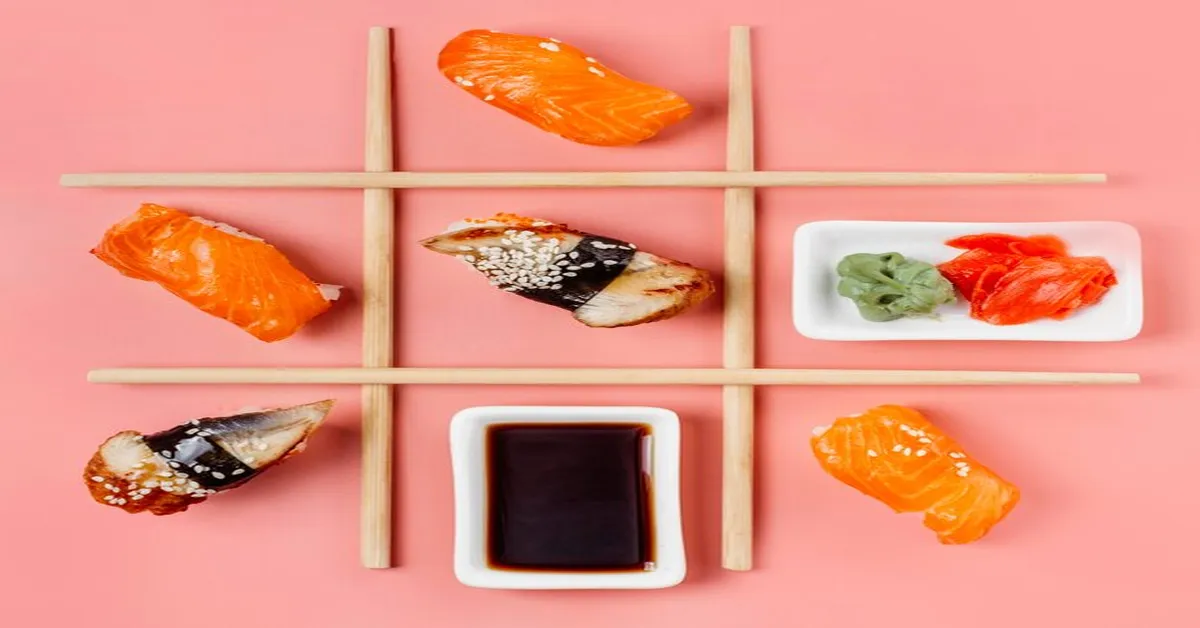When it comes to Japanese cuisine, few dishes spark as much curiosity and debate as nigiri vs sashimi. If you’re a fan of sushi or just starting your culinary journey into the world of Japan, understanding these two delightful offerings can elevate your dining experience. Both are artfully crafted with fresh ingredients, yet they possess distinct characteristics that set them apart. Whether planning a dinner at a trendy sushi bar or exploring the depths of home cooking, knowing the difference between nigiri and sashimi is essential. Dive in with us as we unravel the essentials of these beloved Japanese staples and help you make informed choices on your next order!
Japanese Food Guide—Sushi, Nigiri, Sashimi, Maki
Japanese cuisine offers a diverse array of dishes, each with its own unique characteristics. Sushi is often seen as the umbrella term that encompasses various styles and preparations of vinegared rice paired with different ingredients. This delightful dish can be found in numerous forms, from rolls to hand-held bites.
Nigiri vs sashimi are two popular variations within this spectrum. Nigiri consists of a small mound of rice topped with fresh fish or seafood, showcasing the harmony between flavors and textures. It’s an artful presentation that emphasizes quality ingredients.
Sashimi, on the other hand, strips away the rice altogether to highlight thinly sliced raw fish served on its own. It’s all about savoring the pure taste and freshness of high-quality seafood without any distractions. Understanding these distinctions helps deepen appreciation for Japanese culinary artistry.
What Is Nigiri?
Nigiri is a traditional Japanese dish that showcases the beauty of simplicity. It consists of a small, hand-formed mound of sushi rice, typically seasoned with vinegar and sugar. This delicate base serves as the canvas for an exquisite slice of fresh fish or seafood placed on top.
The art of making nigiri lies in its craftsmanship. Chefs often use their hands to mold the rice into just the right shape, ensuring it holds together while still feeling light and airy in your mouth. The topping can vary widely, featuring everything from salmon to eel or even vegetables for those seeking vegetarian options.
What truly sets nigiri apart is how each piece highlights the freshness and quality of its ingredients. A drizzle of soy sauce or a touch of wasabi enhances its flavor without overwhelming it, allowing you to savor every bite fully.
What Is Sashimi?
Sashimi is a Japanese delicacy that focuses on the sheer quality of raw fish. Unlike sushi, which often includes rice and toppings, sashimi is all about simplicity. It consists solely of thinly sliced fresh seafood served without any additional ingredients.
The art of preparing sashimi lies in its presentation and freshness. Chefs take great care to select high-quality fish, ensuring it’s at peak flavor and texture. Common types include tuna, salmon, and mackerel, but many other varieties can be used as well.
Traditionally served with soy sauce for dipping or garnished with wasabi and pickled ginger, nigiri vs sashimi offers a pure taste experience. Each bite highlights the natural flavors of the fish while allowing diners to appreciate culinary craftsmanship in every detail.
The Fresh Fish Myth
Many people believe that sushi and its components must always feature fresh fish. While it’s true that freshness plays a key role in Japanese cuisine, the myth surrounding this idea can be misleading. In reality, many types of sushi are made with ingredients that have been marinated or cured to enhance their flavor.
For instance, some varieties of nigiri vs sashimi use cooked seafood or vegetables as toppings. Ebi (shrimp) and anago (sea eel) are often prepared ahead of time. This preparation allows for unique taste profiles while ensuring safety and consistency in quality.
Moreover, certain dishes require aging techniques to develop flavors further. Sashimi-grade fish may go through processes like freezing before serving, which helps eliminate parasites without sacrificing quality. Understanding these nuances dispels the notion that only “fresh” equals superior when it comes to sushi experiences.
Nigiri vs Sashimi
Nigiri vs sashimi often spark confusion among sushi lovers, but they offer distinct experiences. Nigiri features a small mound of vinegared rice topped with fresh fish or seafood. It’s crafted by hand, allowing chefs to showcase their skill and highlight the flavors of each topping.
Sashimi, on the other hand, is all about simplicity. It consists solely of thinly sliced raw fish or seafood served without rice. The emphasis here is on freshness and quality, making it a true delicacy for those who appreciate pure flavors.
When deciding between nigiri vs sashimi, consider your craving for carbs versus the desire for unadulterated taste. Each dish brings its own unique qualities to the table—whether you’re in the mood for something hearty or light!
Making the Best Choice
When deciding between nigiri vs sashimi, consider your taste preferences. If you enjoy a combination of flavors and textures, nigiri might be the perfect choice. The nigiri vs sashimi rice paired with fresh fish creates a delightful bite that’s both satisfying and flavorful.
On the other hand, if you are a purist at heart, nigiri vs sashimi could be your go-to. This dish showcases the quality of the fish in its simplest form, allowing for an appreciation of freshness without distractions. Each slice highlights the intricacies of flavor that only good-quality seafood can provide.
Think about how adventurous you feel as well. If you’re willing to explore different toppings or sauces on your nigiri vs sashimi, it offers plenty of variety. Sashimi keeps things straightforward but elevates each ingredient’s essence, making it ideal for those who appreciate subtlety in their culinary experiences.
Ready to Order?
When you’re ready to experience the delightful world of Japanese cuisine, ordering can feel a bit daunting. With so many options on the menu, it’s easy to get lost in translation. Fear not—armed with knowledge about nigiri vs sashimi, you’re one step closer to making an informed choice.
Consider your preferences for flavors and textures. If you enjoy a combination of sushi rice and fresh fish, nigiri might be your perfect match. On the other hand, if you’re craving pure seafood without any accompaniments, go for nigiri vs sashimi to savor the essence of each bite.
Don’t forget about dipping sauces like soy sauce or wasabi that elevate these dishes further. So whether you’re dining out or getting takeout, being knowledgeable makes every meal more enjoyable as you dive into this culinary adventure!
Understanding the Difference: Nigiri, Hand Roll, Sashimi, and Cut Sushi
Nigiri, hand rolls, sashimi, and cut sushi each offer a unique experience. Nigiri features a small mound of rice topped with fresh fish or seafood. It’s often shaped by hand, emphasizing the skill of the chef. The simplicity highlights the quality of ingredients.
Hand rolls are quite different. These are cone-shaped sushi wrapped in seaweed filled with rice and various fillings like vegetables and seafood. They’re perfect for those who enjoy eating on-the-go or want a more interactive dining experience.
Sashimi is all about raw fish served without any rice at all. It celebrates the freshness and flavor of high-quality fish, allowing its natural taste to shine through. Cut sushi generally refers to traditional rolls sliced into bite-sized pieces but can vary based on regional styles and preferences—bringing versatility to this beloved cuisine.
What’s the Difference Between Sushi, Sashimi & Nigiri?
When delving into the world of Japanese cuisine, understanding the distinctions between sushi, sashimi, and nigiri is crucial. Sushi serves as an umbrella term that encapsulates various dishes featuring vinegared rice paired with fish or vegetables. This can include rolls (maki) and hand rolls.
Sashimi is quite distinct; it refers specifically to slices of raw fish served without rice. It’s about savoring the pure flavor of fresh seafood in its unadulterated form.
Nigiri sits comfortably in between these two categories. It consists of a small ball of seasoned rice topped with a slice of fish or other ingredients. The balance between the rice and topping makes nigiri unique.
So when you’re at a nigiri vs sashimi restaurant next time, you can confidently navigate your options knowing exactly what each dish entails! Understanding these differences enhances your dining experience and opens up new possibilities for culinary exploration within Japanese cuisine.









